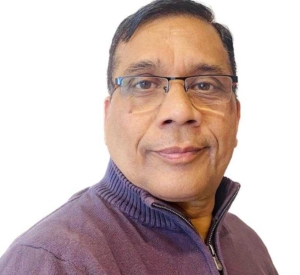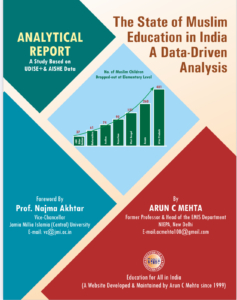Vacant Engineering Seats in India (2025)
A Persistent Challenge Amidst Evolving Educational and Industrial Landscapes
Introduction
The landscape of engineering education in India has undergone significant transformations in recent decades, marked by rapid expansion in institutional capacity and fluctuating student demand. A recent report highlights a paradoxical situation in Tamil Nadu, where despite a record enrollment of over 3.02 lakh students in the Tamil Nadu Engineering Admissions (TNEA) for 2025, more than 45,000 seats are projected to remain vacant under the state’s single-window admission system. This follows the approval of over 2.02 lakh seats across Anna University and its affiliated colleges, an increase from the previous year’s 1.80 lakh. Allotments across three counselling rounds totalled approximately 1.55 lakh, underscoring a mismatch between supply and uptake. While supplementary counselling for students passing Class 12 supplementary exams may marginally reduce vacancies, the trend points to broader systemic issues. This phenomenon is not isolated to Tamil Nadu but reflects a national pattern, where excess capacity in engineering programs coexists with selective demand for high-quality institutions and emerging disciplines. Extending this analysis to other states reveals similar disparities, prompting an examination of historical trends, underlying causes, potential solutions, policy frameworks, industrial demand, and the roles of key stakeholders such as the All India Council for Technical Education (AICTE).
Vacant Seats Across States in 2025
Engineering seat vacancies vary considerably across Indian states, influenced by factors such as regional economic development, institutional quality, and student preferences for specific branches like computer science and artificial intelligence. In southern states like Tamil Nadu and Telangana, vacancies are notable despite robust industrial ecosystems, while central states like Madhya Pradesh exhibit higher rates. Below is a tabular summary of total and vacant seats in select states for the 2025 academic year, compiled from available data. Note that figures for some states are partial (e.g., government colleges only) due to incomplete reporting, and national aggregates suggest an overall vacancy rate of around 30%.
| State | Total Seats (Approximate) | Vacant Seats (Approximate) | Vacancy Rate (%) | Notes |
| Tamil Nadu | 202,000 | 45,000 | 22.3 | Increased seats from 180,000 in 2024; record enrolments but gaps in rural colleges. |
| Telangana | 83,054 | 5,493 | 6.6 | 93% filled; strong demand for CSE/AI, but EEE vacancies at 3,636. |
| Maharashtra | Not fully reported (est. 200,000+) | 21,555 | ~10-15 | Post-CAP Round 2 data; despite 1.89 lakh applications, significant vacancies persist. |
| Madhya Pradesh | Not fully reported (est. 100,000+) | >50,000 | >50 | Over 50% vacant after two rounds; indicative of broader central India trends. |
| Gujarat | 9,385 (govt colleges only) | 380 | 4.1 | Govt colleges; offline round announced; private sector vacancies higher. |
| Mizoram | Not fully reported | Varies (spot round matrix) | N/A | Spot rounds for remaining seats; small-scale but reflective of north-eastern challenges. |
These state-level disparities highlight a concentration of vacancies in less preferred institutions and branches, with urban and tech-focused programs faring better.
National Trends in Engineering Seats Over the Last Five Years
At the all-India level, engineering seats have fluctuated, with a general decline in total approved seats amid efforts to rationalize capacity. Vacancy rates have hovered between 30% and 44%, driven by oversupply and shifting student interests. The table below presents aggregated data for undergraduate engineering programs from 2020-21 to 2024-25 (with 2025 projections based on trends). Total seats peaked around 1.5-2.3 million in earlier years but have been curtailed through AICTE interventions.
| Year | Total Seats (Lakhs) | Vacant Seats (Lakhs) | Vacancy Rate (%) | Key Observations |
| 2020-21 | ~14.0 | ~6.16 | 44.0 | High vacancies amid COVID-19 disruptions; 44.2% in previous year. |
| 2021-22 | 12.53 | 4.21 | 33.6 | Decline in total seats by ~2 lakhs from 2017-18; improved but persistent gaps. |
| 2022-23 | ~12.0 | ~4.8 | ~40.0 | Around 35-40% vacancies; focus on private institutions. |
| 2023-24 | ~11.5 | ~4.0 | ~35.0 | Continued rationalization; Tamil Nadu alone had ~49,579 vacant. |
| 2024-25 | ~11.0 (est.) | ~3.3 (est.) | ~30.0 | Eight-year high in B.Tech seats but vacancies at ~30%; southern states dominant. |
These figures indicate a structural oversupply, with vacancies exceeding 3-6 lakhs annually, far surpassing actual demand.
Reasons for Vacant Seats
Several interrelated factors contribute to this surplus. First, there is an evident oversupply of seats relative to qualified aspirants, stemming from unchecked proliferation of engineering colleges during the 2000s-2010s. Faulty planning by regulatory bodies and state governments led to approvals without rigorous demand assessments, resulting in poor-quality institutions in rural areas lacking infrastructure and faculty. Diminishing job prospects, with employability rates at ~40-72%, deter students, as traditional branches like civil and mechanical offer low returns on investment amid high fees. Shifts toward alternative careers in management, data science, or non-technical fields exacerbate this. Additionally, outdated curricula fail to align with industry needs in emerging areas like AI and cybersecurity, while intense competition and rising costs further reduce appeal.
Solutions to Address Vacancies
To mitigate this, a multi-pronged approach is essential. Regulatory bodies should enforce stricter closures of underperforming colleges, as AICTE has begun by reducing seats and reviewing approvals biennially. Curriculum reforms to emphasize industry-relevant skills, such as through partnerships with tech firms, could boost enrollment. Lowering entry barriers for quality institutions while capping expansions in oversaturated regions would balance supply. Enhancing employability via skill development programs and promoting emerging fields could revive interest. Finally, data-driven planning, including minimum cut-offs and mergers of institutions, would prevent wasteful capacity.
Are There More Seats Than Required?
Unequivocally, yes. India’s engineering ecosystem produces ~1.5 million graduates annually, but industry absorption is limited to high-skill roles, leaving many underemployed. Oversupply has devalued degrees, with vacancies signalling market saturation rather than scarcity.
Policy Guidelines and the Role of AICTE
AICTE, established in 1945 as an advisory body and statutorily empowered in 1987, regulates technical education to ensure quality and coordinated development. Its guidelines, outlined in the Approval Process Handbook 2024-27, mandate infrastructure norms (e.g., faculty-student ratios of 1:20), accreditation, and periodic reviews for seat approvals. AICTE proposes removing seat caps for top colleges from 2024-25, allowing up to 360 intakes if infrastructure suffices, while curbing new approvals in saturated areas. It also oversees supernumerary seats for economically weaker sections per Ministry of Education directives. However, critics argue AICTE’s past lenient approvals contributed to faulty planning, leading to the current crisis. Responsibility lies shared: AICTE for national oversight, state governments for implementation, and colleges for quality maintenance.
Demand for Engineers from the Industry Side
Contrary to vacancies, demand remains robust in specialized domains. India’s engineering sector is projected to reach USD 63 billion in R&D by 2025, with needs for 2 million cloud professionals and growth in AI, data engineering, and renewables. Employability rose to 72% in 2025, but mismatches persist, with only 10% of graduates industry-ready. Fields like mechanical and IT engineering expect 11-20% growth by 2033.
Seats in IITs and IIITs
Elite institutions like IITs and IIITs exhibit minimal vacancies, with total seats at 18,160 (IITs) and 9,940 (IIITs) in 2025, up from previous years. Initial gaps are filled via Central Seat Allocation Board (CSAB) special rounds, allocating ~13,727 seats in 2025. High demand stems from superior infrastructure, placements, and alignment with industry, contrasting with private colleges.
Concluding Observations
The persistence of vacant engineering seats in India, exemplified by Tamil Nadu’s 2025 scenario, underscores the need for recalibrated policies that prioritize quality over quantity. While AICTE’s guidelines provide a framework, addressing faulty planning requires collaborative efforts to align education with industrial demands. Reducing oversupply, enhancing curricula, and focusing on employability will ensure engineering remains a viable pathway, fostering sustainable growth in India’s knowledge economy.
Suggested Readings
For deeper insights into the causes, implications, and potential solutions for vacant engineering seats in India, the following selected reports, articles, and studies are recommended:
- “Why 64% MTech Seats Are Vacant in Indian Colleges” – Discusses factors like outdated curricula and poor ROI in postgraduate engineering.
- “The Curious Case of Vacant Engineering Seats in Karnataka” – Analyses regional trends in seat vacancies and high fees.
- “Is the Craze for Engineering Dwindling in India? An In-Depth Look at Recent Trends” – Explores declining enrolments due to competition and job market shifts.
- “Paradoxes and Contradictions in the Growth of Engineering Education in India: Challenges and Prospects” – A comprehensive PDF report on historical growth, vacancies, and policy prospects.
- “Top Talent, Elite Colleges, and Migration: Evidence from the Indian Institutes of Technology” – Academic paper on talent distribution and migration in elite engineering institutions.
- “Where the Engineers Are” – Examines engineering job filling rates and global comparisons.
- “India’s Engineering Courses Are Losing Their Sheen: Low Enrolment, Placement Rates Present Grim Picture” – Highlights national trends in enrollment and employability challenges.
- “Engineering Admissions Decline: More Than 30% Seats Lying Vacant, Student Enrolment Declines First Time in at Least 5 Years” – Focuses on recent declines and the rise of new-age tech courses.
- © 2025 Education For All in India. All rights reserved.


